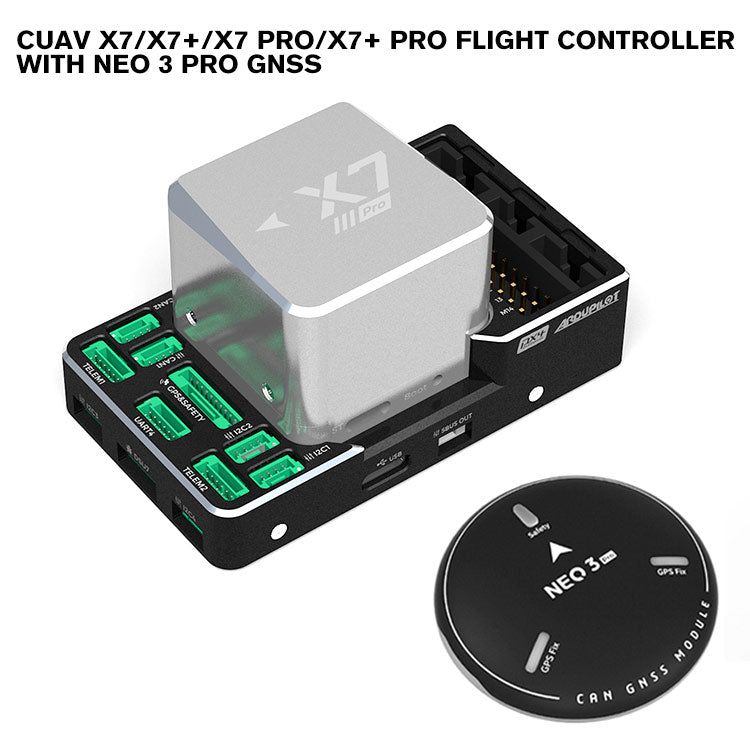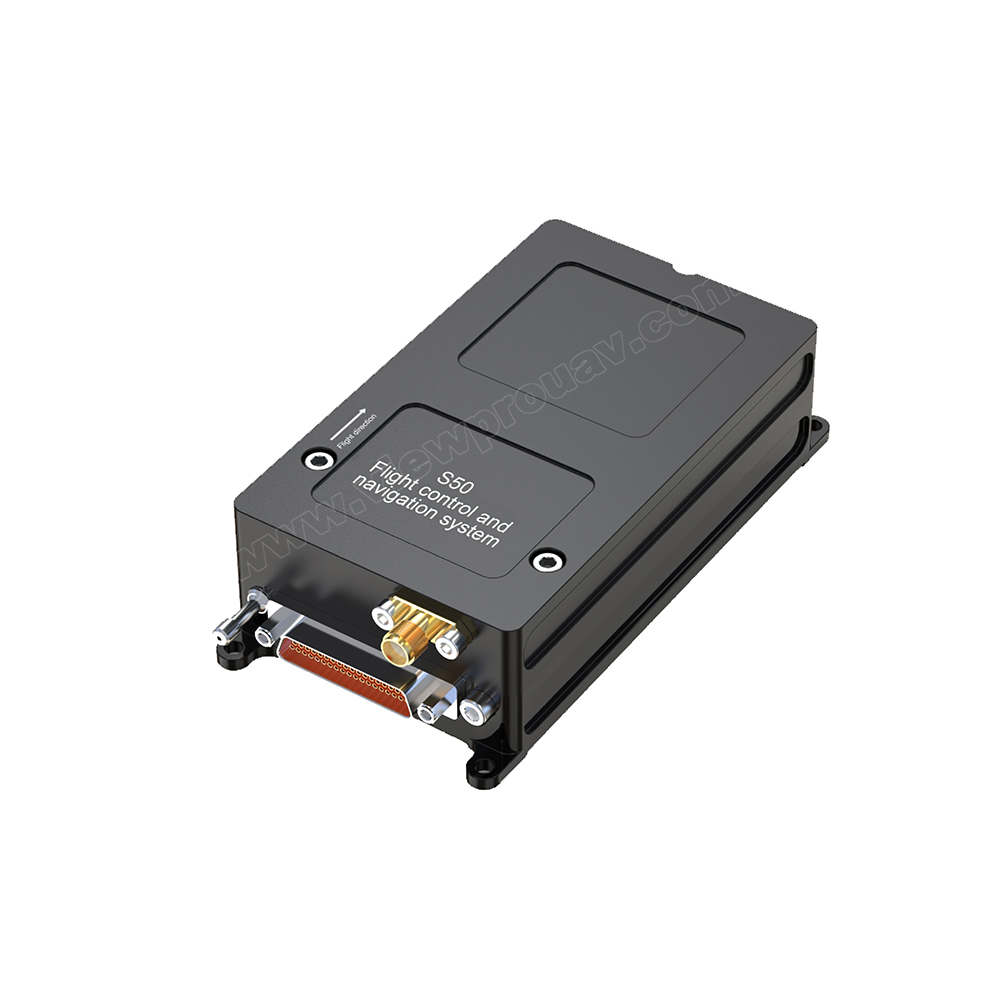SparkNavi Drone Flight Controller and GNSS/INS Made in Taiwan: Leading the Way in Drone Innovation
SparkNavi Drone Flight Controller and GNSS/INS Made in Taiwan: Leading the Way in Drone Innovation
Blog Article
Exploring the Role of Drone Flight Controllers in Enhancing Flight Stability and Navigation Efficiency
The development of drone innovation has actually significantly enhanced the relevance of trip controllers, which serve as the mind of these aerial automobiles. By incorporating real-time information from a range of sensing units, flight controllers enhance trip security and navigating efficiency, making certain that drones can run smoothly also in intricate environments. This discussion will check out the essential components that add to these enhancements, as well as the implications for the future of autonomous flight. What developments exist in advance that could even more change the capabilities of drone trip controllers?

Recognizing Flight Controllers
Trip controllers are important parts in the functioning of drones, functioning as the minds that manage and stabilize trip procedures. These innovative gadgets process data from various sensors, including accelerometers, gyroscopes, and GPS, to guarantee that the drone preserves its desired trip path. The flight controller translates this data and implements commands based on pre-defined algorithms, allowing the drone to react to ecological adjustments, such as wind or obstacles.
The key feature of a flight controller is to preserve security during flight. It accomplishes this by making real-time adjustments to the drone's electric motors and control surfaces, ensuring equilibrium and control. Furthermore, contemporary flight controllers integrate innovative attributes such as waypoint navigation, permitting automated flight courses and improved operational effectiveness.
Understanding the design of flight controllers is critical for both specialists and enthusiasts. As modern technology breakthroughs, trip controllers have actually ended up being much more small and qualified, integrating synthetic intelligence to boost decision-making procedures and adjust to complicated trip scenarios.
Key Components of Flight Stability
Attaining optimal flight stability in drones relies upon a number of essential parts that operate in performance to make certain controlled and smooth operations. Central to this security is the flight controller itself, which processes information from numerous sensing units to keep the desired trip mindset. This includes accelerometers and gyroscopes that measure activity and orientation, permitting real-time changes to the drone's placement.
Another critical element is the electronic speed controllers (ESCs), which control the power delivered to the motors. By carefully adjusting electric motor speeds in feedback to trip controller commands, ESCs assist keep equilibrium and combat disruptions brought on by wind or abrupt activities.
In addition, the style of the drone's framework plays a crucial role in trip stability. A well-structured framework lessens vibrations and boosts the total wind resistant profile, adding to smoother trip characteristics. Ultimately, the combination of sophisticated formulas within the trip controller aids in predictive modifications, ensuring a adaptable and receptive flight experience.
Together, these parts form a cohesive system that enhances a drone's stability, permitting for precise handling and boosted efficiency in numerous trip conditions.
Navigation Efficiency Strategies
Efficiency in navigation is important for optimizing drone operations, particularly in complicated environments. Effective navigating methods enhance the capability of drones to traverse challenging surfaces and stay clear of obstacles, thus enhancing operational performance and safety.
One popular technique is the implementation of advanced general practitioners and inertial measurement units (IMUs) that provide accurate place tracking and orientation information. These innovations allow drones to compute optimum trip paths in real-time, thinking about numerous factors such as wind conditions and prospective obstacles.
An additional strategy entails making use of algorithms for course planning and optimization. Algorithms such as A * and Dijkstra's algorithm can be released to establish the most reliable path while reducing energy consumption and trip time. Integrating device discovering versions can enable drones to adaptively learn from their settings, improving navigation capacities via experience.

Impact on Autonomous Drones
The integration of sophisticated navigating strategies has greatly changed the capacities of autonomous drones, enabling them to run with higher autonomy and precision. SparkNavi drone flight controller and GNSS/INS made in taiwan. These improvements are mostly credited to advanced trip controllers that use real-time information handling and sensing unit fusion, permitting drones to navigate complex settings perfectly
The effect on independent drones extends past plain navigating; it encompasses improved challenge evasion, improved stability during dynamic problems, and enhanced objective reliability. By leveraging algorithms that incorporate artificial intelligence and expert system, drones can adapt to transforming situations, making notified choices that maximize their flight paths while minimizing dangers.
Moreover, the implementation of durable flight controllers has actually helped with the execution of complex tasks, such as aerial inspections, shipment solutions, and farming surveillance, with marginal human intervention. This ability not only simplifies operations however additionally decreases human mistake, thereby boosting overall safety and security.
As an outcome, the operational range of independent drones has actually broadened considerably, making them important devices in different sectors. Their capacity to execute effectively in varied circumstances emphasizes the critical duty that advanced flight controllers play in forming the future of unmanned airborne systems.
Future Patterns in Flight Control
Frequently, innovations in trip control modern technology Web Site are positioned to redefine the landscape of drone procedures in the coming years. Emerging trends indicate a substantial change in the direction of enhanced artificial knowledge (AI) assimilation, enabling trip controllers to refine real-time information much more efficiently. This advancement will promote better decision-making abilities, enabling drones to adjust to dynamic environmental problems autonomously.
Additionally, the application of device understanding algorithms is expected to enhance predictive upkeep, consequently lessening downtime and prolonging the lifecycle of drone components. This proactive method to maintenance will be vital as drone applications increase across different industries, from agriculture to logistics.

.jpg)
Lastly, advancements in secure communication protocols will certainly resolve safety and governing concerns, making certain that drones can operate effortlessly in busy airspaces (SparkNavi drone flight controller and GNSS/INS made in taiwan). Jointly, these fads point towards a future where flight control systems are not just smarter and extra additionally capable yet efficient of running securely in a significantly incorporated airspace
Conclusion
In verdict, drone flight controllers are important to enhancing flight security and navigation efficiency via the sophisticated handling of sensor information. By preserving optimum flight attitudes and employing innovative algorithms for path optimization and challenge evasion, these controllers substantially contribute to the autonomy and functional safety web and security of drones. As innovation remains to develop, additionally developments in trip control systems are expected, assuring better performance and increased capabilities in the world of unmanned airborne vehicles.
By integrating real-time data from a variety of sensing units, trip controllers enhance flight security and navigating performance, making certain that drones can run efficiently even in complicated settings.Trip controllers are essential parts in the performance of drones, serving as the brains that manage and maintain trip operations. In addition, modern trip controllers include advanced features such as waypoint navigation, permitting for automated trip courses and enhanced functional effectiveness.
Central to this stability is the trip controller itself, which processes data from different sensors to preserve the wanted you can find out more trip mindset.In conclusion, drone trip controllers are integral to improving trip stability and navigating effectiveness through the sophisticated handling of sensing unit data.
Report this page